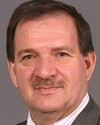I will clarify, Monsieur Lussier. This is one of the problems where the MAC has failed the people of Alberta. The testing was only begun in 2006. These experiments took place in our drinking water in 2004 and earlier.
I do not know what was in my water. EnCana actually came to in 2003, for a well on my neighbour's land, and I asked to test my well. But one of the problems is that this company didn't tell us coal-bed methane was coming around us. They actually said in public, “No, it's not coming yet”, and through investigation and searching, I found out they had already drilled 35 CBM wells right around us. In fact, they had already fractured into our drinking water. They didn't tell us, they didn't monitor the water, and as soon as they knew they had done this.... So, unfortunately, I have no knowledge of what was in my water first.
If they had told me it was going to be CBM, because I work in the patch, I would have insisted on proper hydrocarbon testing and the BTEX. This was not done. However, I'm a scientist, so I observe my water. There has been gas, historically, in Alberta water, but nobody knows what it is. There are no studies on whether it was methane.... It could be CO2. It could be a pump causing a lot of oxygen and bubbles.
Before the CBM, my water would only have bubbles for a few seconds. In 2005, all of a sudden, it was for more than a minute, and the bubbles would shoot high off the glass, so anecdotally, that's an indicator of a big change. Some experts have said natural methane in groundwater is usually below one milligram per litre. Ours is up to 30 milligrams to 66 milligrams. That's far more than natural.



